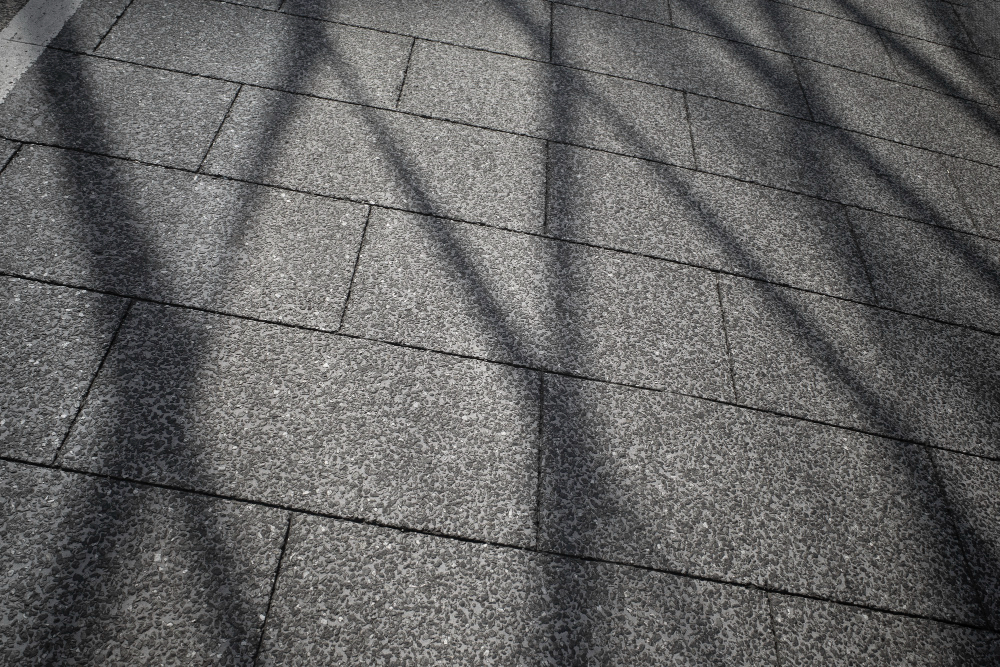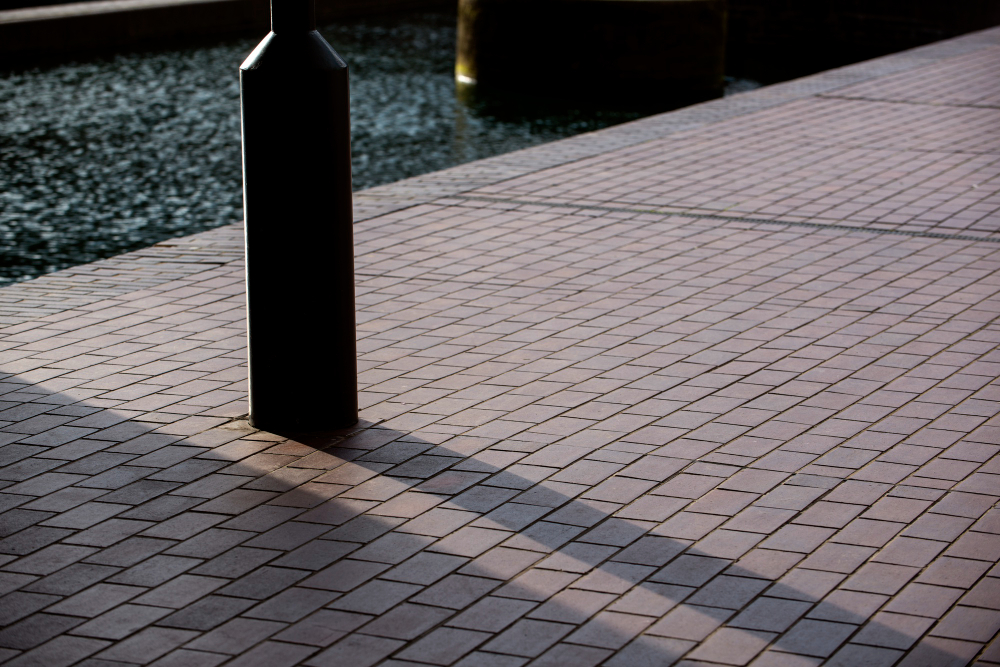Best Materials for Sidewalk - Pros & Cons
29 March, 2024
Being one of the first things to see when approaching your place (and the first one to step on), a good sidewalk can complement your design choices and enhance the general landscape of your space. In this article, we will discuss the pros and cons of the best materials for sidewalk and what to consider before choosing.
Concrete Sidewalks
The most common material for sidewalks has always been concrete, which is no wonder, considering its indisputable pros, among which there are:
- Durability – a well-installed concrete sidewalk can last up to 25 years, enduring lots of damage.
- Aesthetics – concrete can come in various design choices, with numerous colors and textures that can make beautiful patterns or imitate other materials.
- Resistance – concrete can withstand almost any weather condition and even heavy foot traffic due to its durability and resilience.
However, concrete is not a perfect material, coming with the following cons:
- Cracks – concrete tends to form cracks over time. They might be small and unnoticeable but may also be well visible.
Eco-friendliness – the concrete industry is vast, and it causes up to 8% of global CO2 emissions, making it not an environmentally friendly material.

Paver Sidewalks
Pavers are one of the top material options for sidewalk due to their following traits:
- Aesthetics – pavers can come in virtually any color, allowing for implementing even the boldest design choices.
- Easy repair – unlike concrete, a solid substance, damaged pavers can be easily replaced individually.
- Crack-resistance – due to the quite small surface of every individual paver, they are much more resistant to forming cracks.
The main cons of installing pavers:
- Preparation – pavers surfaces require a lot of pre-installation work, such as leveling the surface. However, pavers are pretty easy to install after that.
- Maintenance – if joints between individual pavers are not tight enough, you will need to spend a lot of time and effort cleaning and maintaining them to avoid disruptions or weeds development.
Cost – the installation cost can be higher than that of other materials.
Rubber Sidewalks
Rubber sidewalks are one of the most versatile choices for these reasons:
- Safety – rubber is an excellent material if you care deeply about safety. Rubber pathways and trails are exceptionally slip-resistant and water-repelling as a surface.
- Shock absorption – even if you happen to fall on a rubber surface, its soft cushioning excels at preventing serious injury from the fall.
- Eco-friendliness – most rubber is produced from recycled or natural materials, where emissions are virtually absent, making it an environmentally friendly material.
However, some factors detract from the pros of rubber covering:
- Limited design options – although rubber can come in various colors and textures, its variety and appeal are limited compared to pavement or stone.
- Price – rubber can be a rather costly choice, averaging at approximately $8-16 per square foot.
Natural Stone Sidewalks
Natural stone is one of the most aesthetically pleasing materials, able to fit into almost any design, not to mention its other benefits:
- Aesthetics – rock has proven to be one of the most amazingly fitting flooring materials. Finding a design choice where natural stone would not fit is impossible. Moreover, stones come in various forms and sizes, allowing for unusual patterns.
- Water and shock resistance – stone is naturally resistant to water, preventing mold and mildew development, and almost entirely resistant to shock, being hard to break and requiring very little maintenance.
- Long lifespan – depending on the quality of materials and installation, natural stone sidewalks can last anywhere from 25 to 50 or even 100 years!
However, you still need to be aware of the following cons
- Price – natural stone is one of the most pricey materials for a sidewalk, as its average materials plus installation cost reach $15-30 per square foot.
Limited design choices – unlike pavers or rubber, natural stone doesn’t come in a vast range of colors and patterns, making a stepping stones sidewalk less customizable.
Asphalt Sidewalks
Besides being the best choice for roads and a common playground flooring material, asphalt has also found its application in sidewalks, primarily due to the following factors:
- Price – compared to other materials, asphalt is one of the most affordable, averaging $3-7 per square foot.
- Installation – asphalt installation is relatively quick and uncomplicated (if done by professionals).
- Smooth and even surface – after installation and drying out, asphalt surfaces are smooth and even.
Some of the cons that asphalt surface owners face frequently:
- Maintenance – asphalt is incredibly prone to form cracks and potholes, requiring regular inspection and maintenance. Inspection must be held at least twice a year, and all the cracks and potholes should be filled in and fixed immediately.
Design options – asphalt typically comes only in black, with few patterns, mostly imitating brick.
How to Choose Material for Sidewalk: Factors to Consider
With all this information, let’s try to sum everything up, covering the main factors to consider when picking the best material for walkway that you need.
Durability
Higher durability means that your sidewalk or walkway will be able to withstand more damage and, subsequently, will last longer without the need to replace or fix it. Natural stone and concrete sidewalks are some of the most durable. However, pavers and rubber can also last for decades. On the other hand, there is asphalt, which is prone to cracks or even potholes and can be demanding and expensive to fix.
Maintenance Requirements
Material for a sidewalk or a pathway should be easy to maintain and not require too much upkeep in the long run. Rubber seems to be the winner, requiring the least maintenance over time. Concrete also might seem a low-maintenance choice if not for its tendency to form cracks. On the other hand, there are pavers and natural stones, which require relatively low maintenance, and even if single elements get damaged, they can always be easily replaced. However, you must remember that they must be cleaned regularly to avoid the development of unwanted flora. Asphalt is the most high-maintenance material.
Cost-Effectiveness
| Sidewalk surfacing material | Cost to install (per square foot) |
| Concrete | $6-12 |
| Paver | $9-20 |
| Rubber | $8-16 |
| Natural Stone | $15-30 |
| Asphalt | $3-7 |

Aesthetic Appeal
Sidewalks should fit naturally into your overall design style, so picking and customizing the material is crucial. While asphalt is poor in visuals, materials like rubber, concrete, and pavers provide various colors and patterns that can suit almost any design. On the other hand, some natural stones don’t seem to have as much variability as some of the other materials. Still, they are considered some of the most aesthetically pleasing materials.
Wrapping up
At the end of the day, choosing what material is best for sidewalk is up to you. We hope our guide to the most common materials for sidewalks was informative and will be helpful in your choice.
